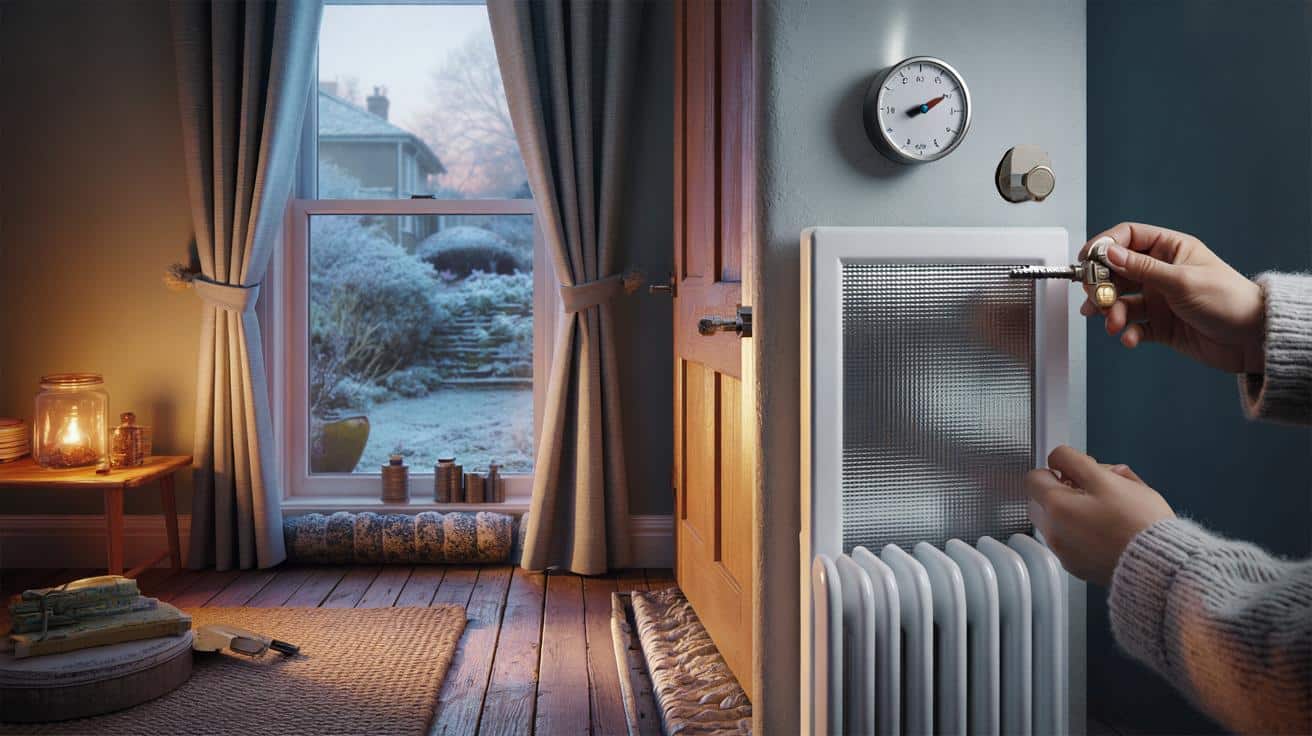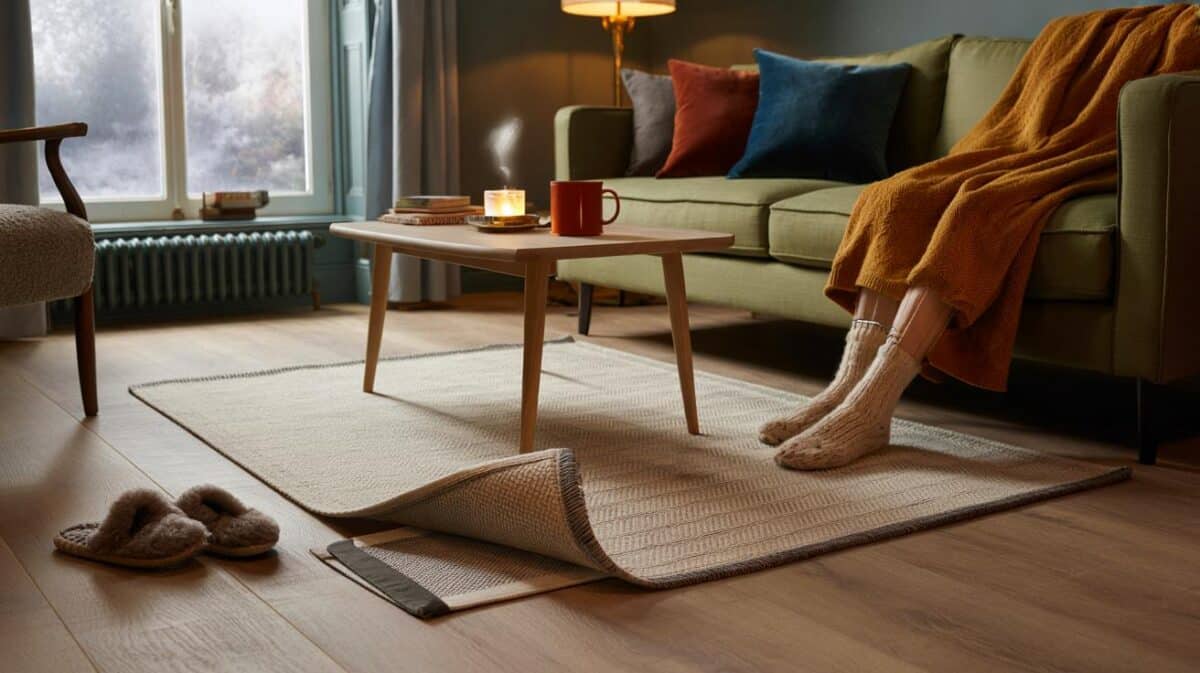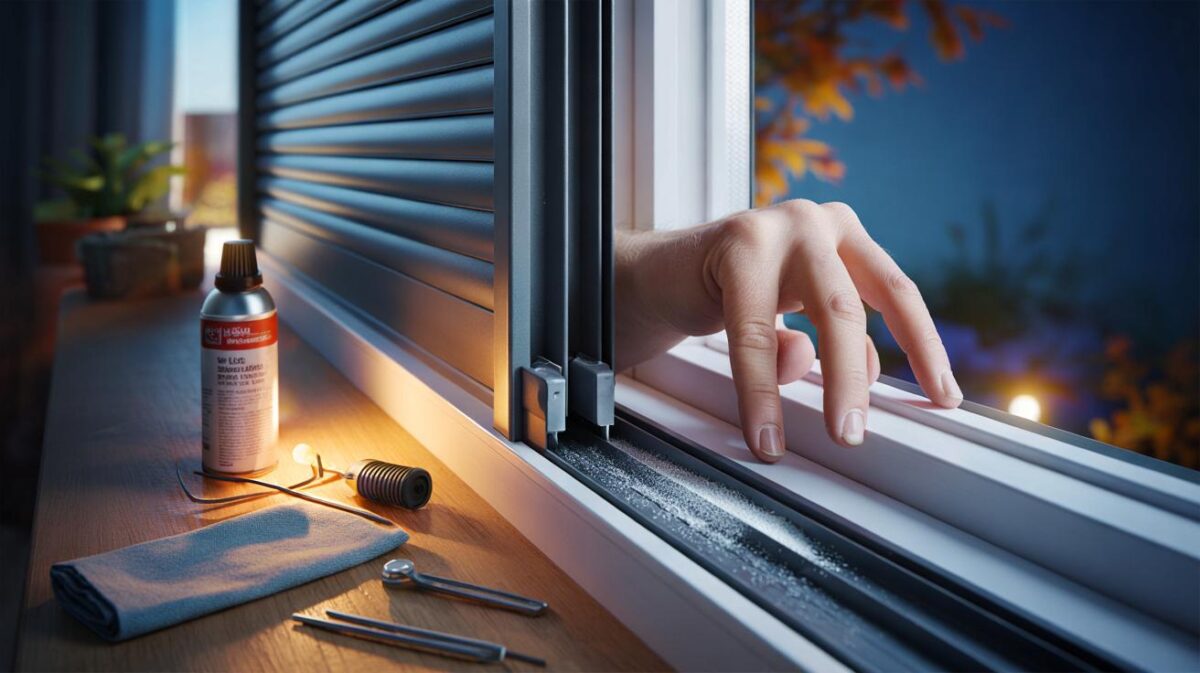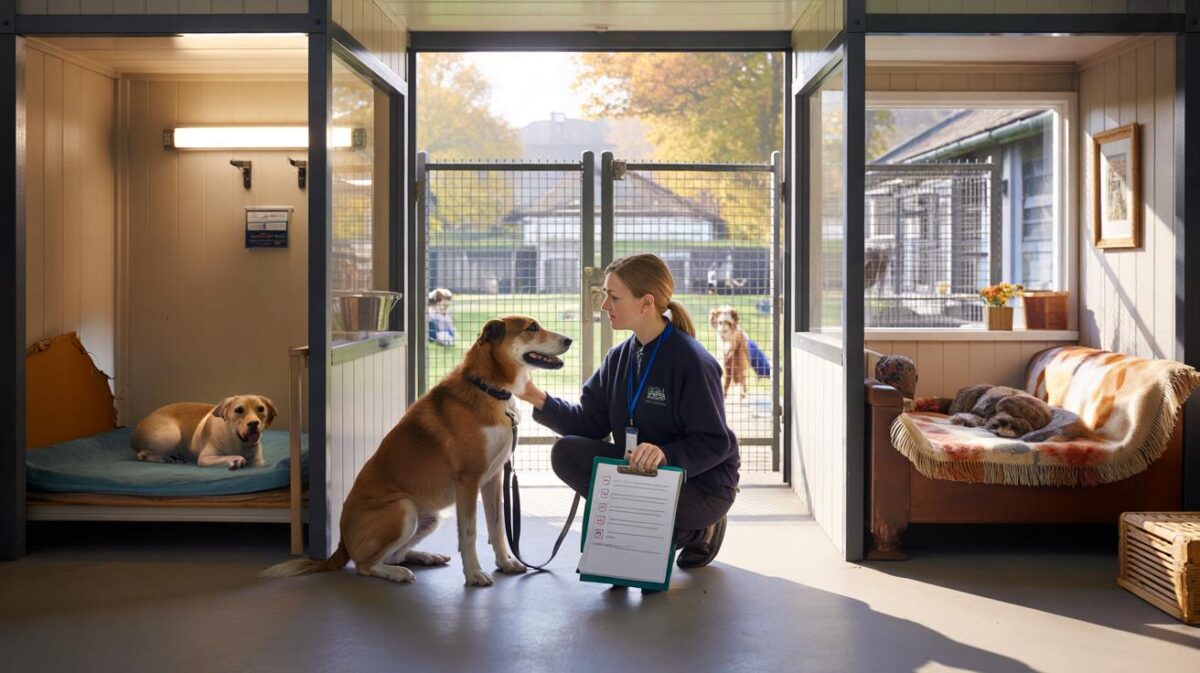Your budget need not follow.
Across the country, households face the same dilemma: keep turning the dial or find smarter ways to stay warm. Small, targeted changes can trim costs within days, not months, and make rooms feel cosier without cranking the boiler.
Hunt down the heat leaks
You feel heat loss before you see it. Run your hand along window frames, under doors and across floor edges on a breezy day. Any chill or movement of air signals a draught that bleeds money.
Windows, doors and floors
Fit self-adhesive foam or rubber seals around frames where light shows through. Slide a draught excluder along the foot of doors, especially those leading to hallways, lofts or garages. For bare floorboards, press flexible filler into gaps and add rugs in high-traffic areas. These fixes tame cold spots and steady the room temperature.
Chimneys and vents
An unused fireplace can draw warm air out all day. A removable chimney balloon or a tight-fitting cap stops the flow while allowing ventilation. Keep trickle vents open where you cook or shower to control moisture and keep walls dry, which helps rooms warm faster.
Every visible beam of daylight around a frame is a leak. Seal it and you bank warmth you already paid for.
Use insulation as a daily habit
Insulation is not only a job for builders. Routine habits add layers without major spend and give quick comfort gains.
Curtains, blinds and sun
Open curtains fully on sunny winter days to draw in free heat. Close them at dusk to add an extra barrier. Choose lined or heavier fabrics for north-facing rooms. Fit thermal blinds tight to the frame on small windows to reduce night-time heat loss.
Loft hatch, tank and pipes
A poorly sealed loft hatch creates a warm-air escape route. Add a foam strip around the hatch and place an insulated cover over the top. Wrap your hot water cylinder with a jacket at least 80 mm thick and lag exposed pipes. These steps shorten heat-up times and keep hot water hot for longer.
Lowering room temperature by just 1°C can trim heating use by about 6%—often the quickest saving you can bank.
Tune your heating, not just your thermostat
Most homes waste gas or electricity because the system runs “hot and hope”. Tuning taps into efficiency designed into modern kit.
Boiler settings that actually save
On a condensing gas boiler, set the flow temperature to 50–60°C for radiators and 40–50°C for underfloor loops. This lets the boiler condense more of the time and use less fuel. Check the pressure sits in the green zone. If your boiler is due a service, book it before the next cold spell.
Radiators that work as a team
Bleed radiators that gurgle or feel cool at the top. Balance the system so every room heats evenly by slightly closing valves on radiators that warm fastest. Fit or adjust thermostatic radiator valves (TRVs) so bedrooms sit cooler than living rooms. Keep the front of radiators clear of sofas and long curtains to avoid trapping heat.
Smart control without being techy
A programmable thermostat or simple timer prevents constant overheating. Aim for 18°C in occupied rooms and 16°C while you sleep. Use schedules that match your day, not a permanent “comfort” setpoint. If you have smart TRVs, zone off little-used rooms and heat only when needed.
Heat the person, then the space: target the rooms you use, at the times you use them, and stop warming empty air.
Prepare the house for winter hazards
Cold weather brings more than chilly toes. A few protective moves cut risk, stress and surprise costs.
Water and frost
Insulate outside taps and pipes in unheated spaces with foam sleeves. Fit a simple frost guard in vulnerable outbuildings. Drain garden hoses and water butts. Know where your stopcock is and make sure it turns freely; a seized valve turns a small leak into a disaster.
Fire and air safety
Test smoke alarms and carbon monoxide detectors and replace weak batteries. If you use a stove or open fire, book a chimney sweep and keep a clear hearth. Never block essential ventilation in rooms with fuel-burning appliances.
Quick wins you can tick off this week
| Action | Time | Typical cost | Potential annual saving |
|---|---|---|---|
| Seal window and door gaps | 1–2 hours | £15–£35 | £40–£90 |
| Lower thermostat by 1°C | 5 minutes | £0 | About 6% off heating use |
| Bleed and balance radiators | 1–3 hours | £0–£10 | £20–£60 |
| Set boiler flow to 50–60°C | 10 minutes | £0 | £30–£100 |
| Close curtains at dusk | Daily habit | £0–£50 | £15–£45 |
A simple checklist before the next cold snap
- Feel for draughts around frames, pipes and floor edges; seal any gaps you find.
- Fit a chimney balloon if the fireplace sits unused.
- Lag hot water pipes and fit a cylinder jacket.
- Bleed radiators and clear furniture away from them.
- Set room targets to 18°C by day, 16°C at night.
- Schedule heating to match wake, work and sleep.
- Test smoke and carbon monoxide alarms.
- Insulate external taps and find the stopcock.
What this could mean for your bill
Take a typical family spending £1,280 a year on space heating. Knock 1°C off the thermostat and you might trim around 6%, or roughly £75. Add basic draught-proofing and smarter schedules, and a 15–25% cut becomes realistic, worth £190–£320. None of this relies on major building work. It relies on prioritising leaks, tuning controls and sticking to an 18°C target in lived-in rooms.
Heat still matters to comfort. If 18°C feels cool when you sit still, add layers and use localised warmth. A heated throw on the sofa draws around 60–100 watts—far less than a full room radiator. Short bursts of ten-minute ventilation each morning keep humidity low and stop condensation, which also makes spaces feel warmer at the same air temperature.
Bigger moves when you have the time
Topping up loft insulation to around 270 mm can save several hundred pounds in a leaky home. Insulating suspended floors prevents icy toes and draughts from below. If your boiler is old and unreliable, a modern condensing unit or a heat pump with correct design and weather compensation cuts running costs over its life. For radiators, reflective panels behind units on external walls can shave losses in older properties.
Grants and schemes change by region and season. Look into help for insulation, boiler upgrades and heating controls if your home has a low energy rating, or if you receive certain benefits. Many councils also fund basic measures like draught-proofing for vulnerable households. Keep any paperwork from installers, as insurers and future buyers value documented improvements.
A quick way to plan your next steps
Walk the house once at dusk. Note where curtains are thin, where air moves, which rooms lag behind, and which radiators roar. Tackle one item a day: seal a gap, set a timer, bleed a radiator, wrap a pipe. Track your smart meter’s half-hour data for a week to see the effect. You will spot patterns within days, and that feedback helps you keep savings through the darkest months.
The goal is simple: keep rooms near 18°C, stop heat escaping, and let your system work smarter—not harder.








